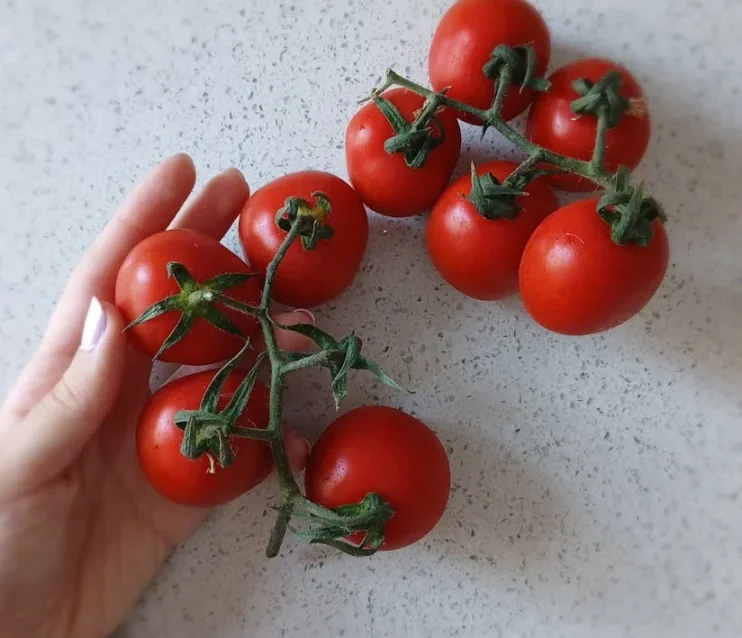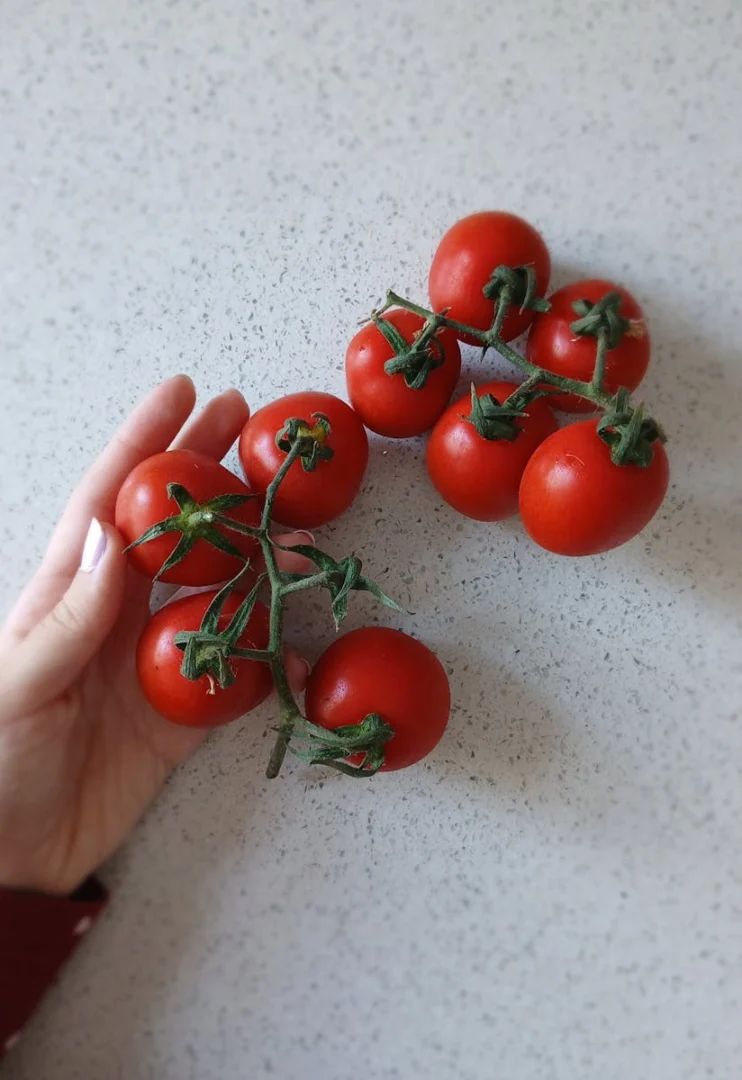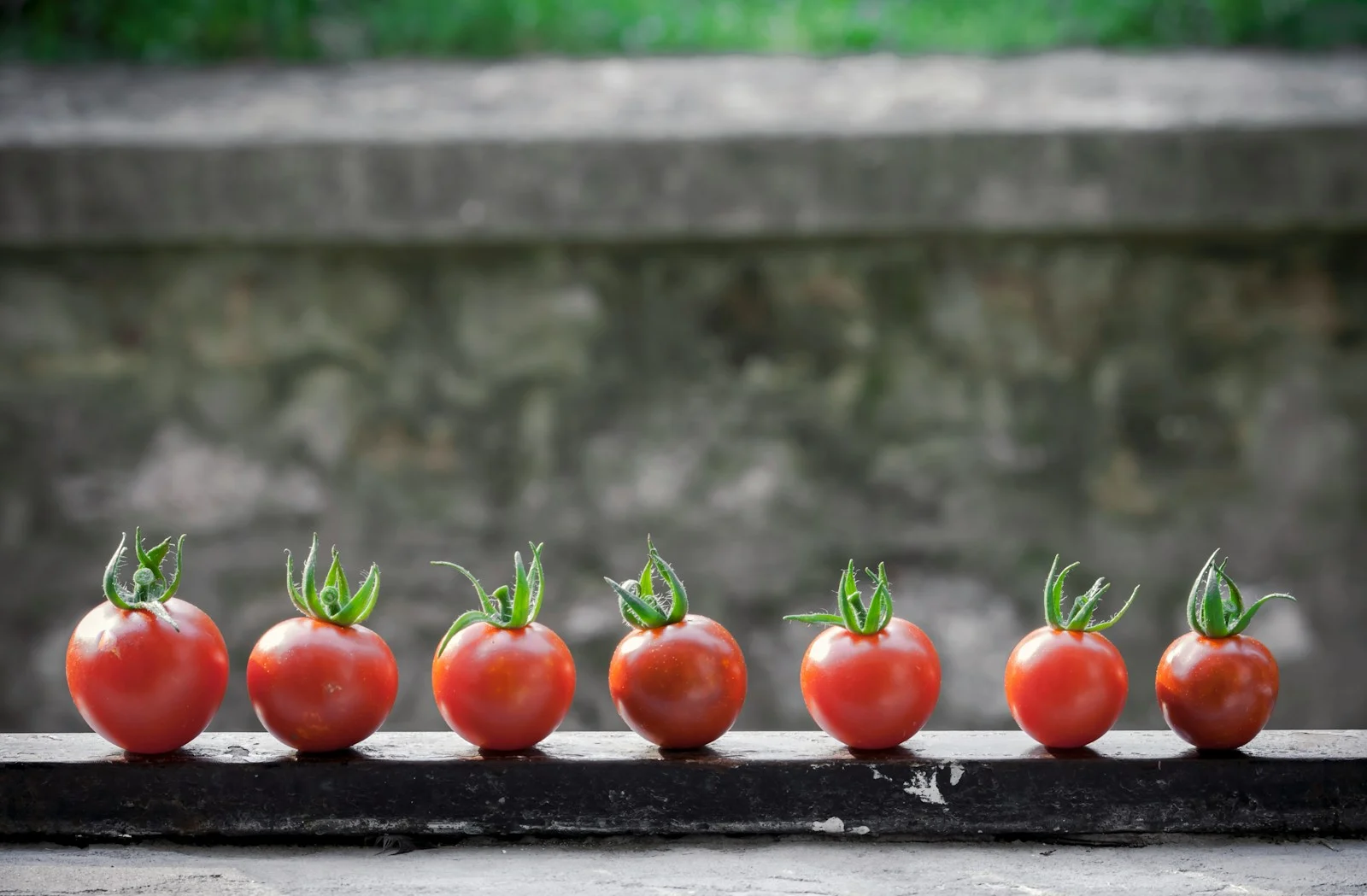This article is a sample portfolio piece created for presentation purposes. It serves exclusively to demonstrate style, structure, and editorial capabilities and may not represent a final, fully optimized, or updated version. If you are interested in professionally crafted articles, localization, or optimized content for your media or brand, contact us through the form or create an order, and we will be happy to prepare a custom solution for you.
Each of our articles is created through a combination of editorial experience, professional knowledge, and modern technologies. At the outset, we clearly define the brief – the topic, target audience, tone of communication, SEO keywords, and required length. We then conduct research using retrieval-based augmented generation (RAG) and verified sources, with AI helping us accelerate data collection, though we manually verify its accuracy. In the next step, we create a logical text structure, strategically place keywords, and adapt the language to the target audience. The finished content undergoes multi-stage linguistic, stylistic, and factual review, including SEO optimization and verification of E-E-A-T signals. When appropriate, we supplement the article with photographs, links, or graphics that enhance its attractiveness and comprehensibility. The final text combines AI assistance with human expertise and enables effective scaling while maintaining high quality.
Summary. Growing tomatoes on your balcony doesn’t require traditional soil – you can use lightweight hydroponic systems like Kratky buckets or coco coir containers that weigh 50% less, use 90% less water, and actually produce faster harvests than conventional methods. The key to success is choosing compact tomato varieties suited for containers, respecting your balcony’s weight limits (typically 50-100 pounds per square foot), and adjusting your nutrient formulas as plants shift from leafy growth to fruit production. You’ll need 6-8 hours of sunlight daily and should maintain pH levels between 5.5-6.5 in your water-based nutrients, but the trade-off is a cleaner setup with fewer pests and the satisfaction of picking homegrown tomatoes in just 90 days.
Limited balcony space shouldn’t stop you from harvesting basket after basket of sun-ripened tomatoes—even without traditional garden soil. Whether you’re living in an apartment with a tiny balcony or simply want to avoid the mess and weight of conventional container gardening, soilless growing methods open up exciting possibilities for urban tomato lovers. The challenge many balcony gardeners face is finding practical ways to grow food in small spaces where traditional soil gardening isn’t safe, clean, or even allowed by building management.
How to grow tomatoes on a balcony without using soil involves three proven methods: Kratky hydroponics (passive water system), coco coir containers (lightweight soilless mix), and vertical aeroponic towers. Each requires 6-8 hours of sunlight, proper nutrient solutions, and balcony-friendly containers that respect weight limits of 50-100 pounds per square foot. You’ll discover these approaches actually offer advantages over soil—they’re cleaner, lighter, use 90% less water, and can produce harvests 25-30% faster than traditional methods.
In this guide, we’ll walk you through everything needed to transform your balcony into a productive tomato garden using soilless techniques. You’ll learn how to choose the right method for your space and experience level, set up containers safely, manage nutrients through different growth stages, and troubleshoot common problems before they derail your harvest. By the end, you’ll have a clear roadmap to picking your first homegrown tomatoes in as little as 90 days—no garden soil required.
Understanding Soilless Growing for Balcony Tomatoes (Why Skip the Dirt)
The Balcony Advantage—Why Soilless Makes Sense
Soilless growing isn’t just a trendy alternative—it solves real problems that balcony gardeners face every single day. Traditional potting soil becomes incredibly heavy when saturated with water, weighing between 75-100 pounds per cubic foot, which can stress or even damage balcony structures not designed for that kind of load. Soilless methods eliminate this safety concern while keeping your outdoor space cleaner and more pleasant to use.
The benefits extend far beyond weight savings. When you grow tomatoes without soil, you also eliminate soil-borne diseases, fungus gnats, and other pests that hitchhike in traditional potting mixes. Your plants get direct access to perfectly balanced nutrients dissolved in water, which explains why hydroponic tomatoes often grow 25-30% faster and produce heavier yields than their soil-grown cousins. Water efficiency is another game-changer—soilless systems recirculate or precisely deliver moisture, using up to 90% less water than conventional container gardening while keeping your balcony floor dry and stain-free.
Here’s what makes soilless growing particularly smart for balcony environments:
- Cleaner setup with no dirt spills or muddy water runoff
- Reduced pest problems since many insects need soil to complete their life cycles
- Better control over plant nutrition with measurable, adjustable feeding
- Easier to move containers when needed for sunlight tracking or weather protection
- Less frequent watering in some systems, perfect for busy schedules or travel
Safety First—Balcony Weight Limits You Need to Know
Before you start growing anything on your balcony, you need to understand the weight capacity of your space. Most residential balconies are designed to support 50-100 pounds per square foot, but older buildings or cantilevered balconies might have lower limits. A single large container filled with wet potting soil, a mature tomato plant, and support structure can easily exceed 80-100 pounds—and that’s just one pot.
Calculating your total weight is straightforward but necessary. Add up the weight of your empty container, the growing medium when fully saturated, the maximum amount of water or nutrient solution, the mature plant with fruits, and any support structures like cages or trellises. This is where soilless methods shine—expanded clay pebbles weigh about 35 pounds per cubic foot, coco coir around 40 pounds when saturated, and perlite just 8-10 pounds compared to soil’s hefty 75-100 pounds.
Strategic placement makes a big difference too. Position your heaviest containers near walls and corners where structural support is strongest, and distribute weight evenly across your balcony rather than clustering everything in one spot. If you’re unsure about your balcony’s capacity, check with your building management or consult a structural engineer—it’s worth the peace of mind before you invest time and money into your garden.
Three Proven Soilless Methods Compared for Small Spaces
Choosing the right soilless method depends on your budget, time commitment, and comfort level with technical growing. Each approach has distinct advantages that make it perfect for different situations and personalities.
The Kratky method stands out as the most beginner-friendly option because it requires zero electricity, no pumps, and minimal daily attention. You set up a reservoir container with nutrient solution, place your plant in a net pot on top, and let the system work passively as the plant drinks down the water level and creates its own air gap for root oxygenation. Initial investment runs about $15-30 per container, and maintenance involves simply checking water levels every few days and refilling when needed.
Coco coir containers offer the easiest transition for gardeners accustomed to traditional soil growing. This natural coconut fiber medium looks and feels similar to potting soil, holds moisture beautifully while still providing excellent drainage, and costs just $10-20 for enough material to fill several large pots. You water and feed almost like regular container gardening, but with the weight savings and cleanliness of a soilless system. It’s forgiving of beginner mistakes and doesn’t require pH testing equipment or precise measurements to get started.
Vertical aeroponic systems maximize space efficiency and yields but demand more technical knowledge and investment ($200-500 for quality systems). These towers spray nutrient-rich mist directly onto suspended roots, delivering maximum oxygenation and fastest growth rates. They’re ideal if you have very limited floor space, want to grow multiple plants vertically, and don’t mind monitoring timers, pumps, and misting schedules. Most balcony gardeners should master Kratky or coco coir first before tackling aeroponics.
Method 1—The Beginner-Friendly Kratky System (Set It and Forget It)
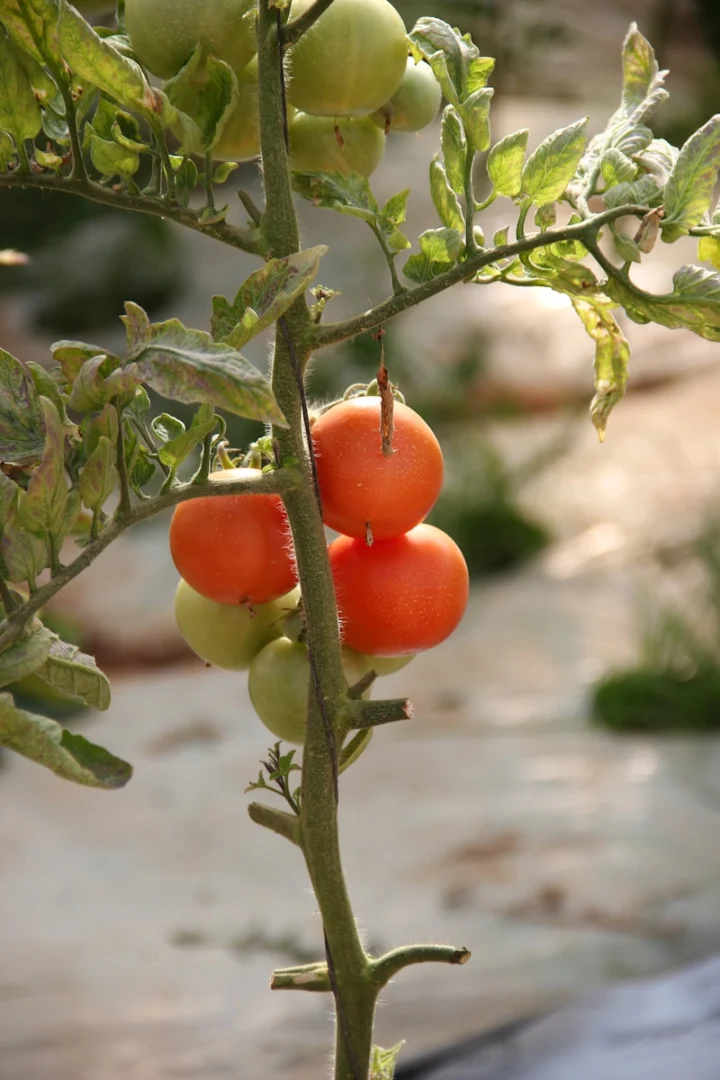
What Makes Kratky Perfect for Balcony Tomatoes
The Kratky method might sound technical, but it’s actually the simplest way to grow tomatoes on a balcony without using soil. This passive hydroponic system requires no electricity, pumps, timers, or complicated equipment—just a container, nutrient solution, and a way to suspend your plant above the water. As your tomato drinks the nutrient solution, the water level naturally drops, creating an air gap that provides oxygen to the roots without any mechanical aeration.
You’ll need a 5-gallon food-grade bucket as your minimum container size for tomato plants, which gives roots enough room and holds sufficient nutrient solution to last 2-3 weeks between refills. The lid gets fitted with a net pot (typically 3-6 inches diameter) that holds your seedling and a lightweight growing medium like rockwool cubes, expanded clay pebbles, or coconut coir. The beauty of this system is its simplicity—once set up correctly, you just monitor the water level and top it off when it gets low, maybe once a week during peak growing season.
Step-by-Step Kratky Setup for Balcony Success
Start by selecting an opaque container that blocks light from reaching the nutrient solution, which prevents algae growth that can compete with your plants and clog root systems. Dark-colored 5-gallon buckets work perfectly and cost just a few dollars at hardware stores. Cut or drill a hole in the lid sized to fit your net pot snugly—it should sit securely without falling through but still be removable for monitoring.
Your nutrient solution needs careful mixing to support healthy growth. Fill your container with water and add hydroponic fertilizer according to package directions, aiming for an EC (electrical conductivity) of 2.0-2.5 for tomatoes and adjusting pH to 5.5-6.0 using pH up or down solutions. This might sound complicated, but inexpensive test kits or digital meters make it straightforward—you’re just making sure your plants can actually absorb the nutrients you’re providing.
Here’s your setup timeline from start to harvest:
- Weeks 1-2: Germinate seeds in rockwool or start with purchased seedlings
- Week 3: Transfer seedling to net pot with growing medium, suspend in bucket with solution touching bottom of net pot
- Weeks 4-8: Monitor water level, letting it drop naturally to create air gap (don’t refill to top)
- Weeks 9-15: Add support structure as plant grows, continue nutrient monitoring
- Weeks 16-18: Begin harvesting ripe tomatoes, maintain solution levels
The initial water level should just touch the bottom of your net pot so roots can access moisture while the plant establishes. Never refill back to this height—let the level drop 2-3 inches before adding more solution, which trains roots to grow downward into the reservoir while maintaining the critical air gap above.
Nutrient Management Made Simple
Feeding tomatoes in a soilless system doesn’t have to be complicated if you understand the two distinct growth phases. Your plants have different nutritional needs during their leafy vegetative stage compared to when they’re flowering and setting fruit, and adjusting your formula accordingly makes the difference between mediocre and exceptional harvests.
Vegetative Stage Formula (Weeks 1-6)
During the first 6 weeks after transplanting, your tomato plants focus entirely on building strong stems, healthy leaves, and extensive root systems. This vegetative growth requires relatively high nitrogen to fuel rapid green growth, along with adequate phosphorus and potassium to support overall plant health. Your ideal NPK ratio during this stage is approximately 7-9-5, with emphasis on that middle number for strong structural development.
Target an EC range of 1.4-2.0 mS/cm (or 1000-1400 ppm if your meter reads in parts per million) during this early growth phase. You can achieve this with a simple recipe using calcium nitrate as your nitrogen source, magnesium sulfate (Epsom salt) for secondary nutrients, and a balanced hydroponic fertilizer base. Mix these into your reservoir according to package directions, test your EC and pH, and adjust as needed before adding plants.
Flowering and Fruiting Stage Formula (Weeks 7+)
Everything changes once your tomato plants start flowering and setting fruit. Now they need less nitrogen (which would push excessive leafy growth at the expense of fruit production) and substantially more phosphorus and potassium to support flower formation, fruit development, and sugar production. Shift to an NPK ratio closer to 5-10-10 to signal your plants that it’s time to focus on reproduction rather than vegetation.
Increase your EC range to 2.0-3.5 mS/cm (1400-2450 ppm) during the fruiting stage, which provides the higher nutrient concentration needed to develop full-sized, flavorful tomatoes. You’ll need to supplement your base fertilizer with additional potassium and phosphorus sources—look for bloom boosters or tomato-specific formulas that emphasize these elements. Check and adjust pH weekly since nutrient absorption shifts it over time, and monitor your plants for any signs of deficiency that suggest your ratios need tweaking.
Method 2—Coco Coir Containers (The Forgiving Middle Ground)
Why Coco Coir Bridges Soil and Hydroponics
Coco coir offers the perfect compromise for gardeners who want the benefits of soilless growing but aren’t ready to dive into pure hydroponics. This natural coconut fiber medium feels familiar to anyone who’s used potting soil, yet delivers the weight savings, cleanliness, and performance advantages of hydroponic systems. It holds moisture exceptionally well while still providing the air pockets roots need to thrive, creating an almost foolproof growing environment.
The material itself is pH neutral, typically ranging from 6.0-6.5, which sits right in the sweet spot for tomato nutrient absorption. Unlike peat-based soils that can become hydrophobic when they dry out, coco coir rewets easily and distributes moisture evenly throughout the container. It’s naturally resistant to mold and fungal growth, breaks down slowly so it lasts multiple growing seasons, and comes from a renewable resource—the fibrous husks of coconuts that would otherwise be agricultural waste.
Weight is where coco coir really shines for balcony applications. When fully saturated with water, it weighs roughly 40 pounds per cubic foot compared to potting soil’s 75-100 pounds—that’s nearly 50% lighter while still providing excellent root support and structure. You can move containers when needed without throwing out your back, and you gain significant safety margin on balconies with weight restrictions.
Container Setup and Medium Preparation
Start with containers at least 12 inches in diameter and equally deep, with multiple drainage holes to prevent waterlogging. Tomato roots need room to spread, and skimping on container size limits your harvest potential no matter how perfect your growing conditions otherwise. Fabric grow bags work beautifully with coco coir since they provide additional air pruning of roots and are extremely lightweight when empty.
Coco coir typically comes as compressed bricks that expand dramatically when hydrated. One standard brick (about 5 pounds compressed) expands to roughly 2.5 cubic feet of growing medium—enough to fill several large containers. Place your brick in a large bucket or tub, add warm water, and watch it expand over 15-20 minutes, breaking up clumps as it hydrates. Rinse thoroughly since some coco coir contains salt residues from processing that can harm plants if not removed.
Mix your prepared coco coir with perlite at a ratio of about 70% coir to 30% perlite for optimal drainage and aeration. This combination prevents compaction over time while making sure roots get both moisture and oxygen. You can add slow-release organic fertilizer pellets at this stage if you prefer lower-maintenance feeding, or plan to use liquid nutrients with every watering (called fertigation) for more precise control over plant nutrition.
Choosing Balcony-Perfect Tomato Varieties
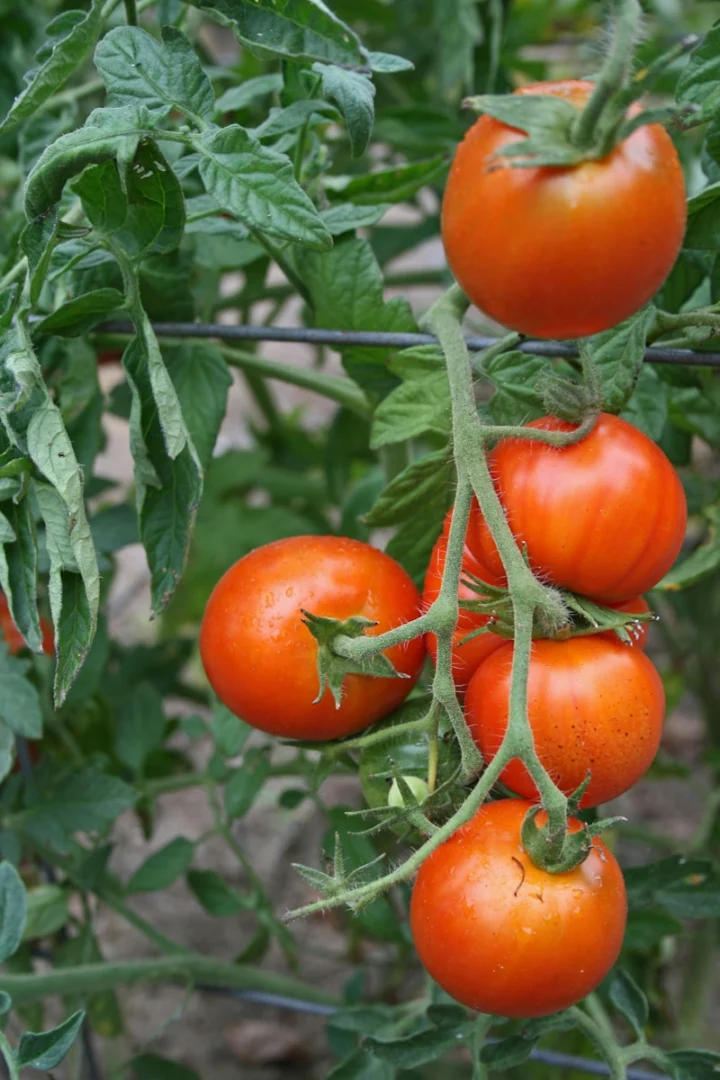
Not all tomato varieties work well in containers on balconies—you need compact plants with controlled growth habits that won’t overwhelm your limited space or require elaborate support structures. The right variety makes the difference between a productive balcony garden and a frustrating tangle of overgrown vines.
Best Determinate and Dwarf Varieties
Determinate varieties grow to a predetermined height, set most of their fruit within a concentrated period, and then stop growing—perfect for balcony containers where you need predictable, manageable plants. Tumbling Tom offers a unique cascading growth habit ideal for hanging baskets or elevated planters, producing sweet 15-20 gram cherry tomatoes that drape beautifully over container edges. Tiny Tim lives up to its name as a true micro-dwarf variety, staying under 16 inches tall while still producing surprising numbers of half-inch fruits perfect for ultra-small balconies or even windowsills.
Bush Early Girl gives you full-sized slicing tomatoes (4-6 ounces) on compact 2-3 foot plants that mature in just 60 days from transplant—ideal when growing seasons are limited by your region’s climate. Balcony Miracle Golden produces beautiful golden-yellow cherry tomatoes on plants that stay around 12-16 inches tall, making it perfect for small spaces while adding visual interest with its unusual fruit color. These dwarf varieties often don’t even need staking, supporting their own fruit load without additional help.
Here are key characteristics to look for in balcony tomato varieties:
- Determinate growth habit with maximum heights under 4 feet
- Days to maturity under 70 for faster harvests
- Compact root systems suited to container growing
- Self-supporting stems or minimal staking requirements
- Cherry or cocktail-sized fruits rather than large beefsteaks
Solving the Balcony Light Challenge
Tomatoes are sun-loving plants that need at least 6 hours of direct sunlight daily to produce fruit, with 8+ hours being ideal for maximum yields. Unfortunately, many balconies don’t receive full sun exposure due to building orientation, neighboring structures, or overhead coverage. This doesn’t mean you can’t grow tomatoes—it just means you need to work smarter with the light you have.
Morning sunlight tends to be cooler and less intense than afternoon sun, but both contribute to your daily total. A balcony receiving 4 hours of morning sun plus 2-3 hours of afternoon sun can successfully grow tomatoes, while a balcony getting only morning or only afternoon light might struggle. Track your balcony’s sun exposure over a full day, noting when direct sunlight hits different areas, so you can position containers strategically for maximum light capture.
Creative Solutions for Shady Balconies
Reflective surfaces can boost available light by 30% or more by bouncing sunlight back onto your plants from multiple angles. Simple white poster board or aluminum foil panels placed behind containers redirect light that would otherwise hit walls or railings. Position reflectors opposite your primary sun source so light hits your plants, bounces to the reflector, and returns to illuminate shaded leaf surfaces that wouldn’t otherwise photosynthesize efficiently.
Supplemental LED grow lights give you control over light quantity and quality regardless of your balcony’s natural exposure. Modern LED panels designed for plants consume minimal electricity (100-150 watts for a small balcony setup), produce little heat, and can extend your growing day by 2-4 hours. Look for full-spectrum lights with both blue wavelengths for vegetative growth and red wavelengths for flowering and fruiting—you’ll typically need about 32 watts of actual LED power per square foot of growing area.
Rotate your containers every few days if possible, turning plants to expose different sides to prime sunlight hours and making sure growth stays even rather than plants leaning dramatically toward the light source. Choose early-maturing varieties like Early Girl or varieties specifically bred for partial shade conditions, which can set fruit with slightly lower light levels than standard tomatoes. Prune lower leaves once plants establish to concentrate energy on fruit production rather than maintaining foliage that receives minimal light anyway.
Watering and Feeding Coco Coir Tomatoes
Coco coir requires a different watering approach than soil because it has virtually no nutritional value on its own—you’re providing everything through your feeding regimen. This gives you precise control but also means you can’t skip feedings without consequences.
Check moisture levels daily by inserting your finger 2 inches into the growing medium. Coco coir should feel consistently moist but never soggy or waterlogged. In hot weather, you might need to water daily or even twice daily for large plants in small containers, while cooler conditions might mean watering every 2-3 days. Unlike soil that can be allowed to dry somewhat between waterings, coco coir performs best when kept evenly moist since the medium itself provides the aeration roots need.
Most growers use a fertigation schedule, adding diluted nutrients with every watering at half the strength recommended on the fertilizer package. This provides steady, consistent nutrition without risk of salt buildup that concentrated feeding can cause. Occasionally water with plain pH-adjusted water to flush any accumulated salts through the drainage holes, especially if you notice white crusty deposits on the surface of your coco coir or container edges.
Troubleshooting Common Soilless Growing Problems
Why Flowers Drop Instead of Setting Fruit
Nothing is more frustrating than watching your tomato plants produce abundant flowers that simply drop off without forming fruit. This common problem, called blossom drop, typically stems from environmental stress rather than anything wrong with your soilless growing method.
Temperature plays the biggest role in successful pollination and fruit set. Tomatoes fail to pollinate properly when nighttime temperatures drop below 55 degrees Fahrenheit or daytime temperatures climb above 90 degrees. The pollen becomes non-viable under these stress conditions, so flowers bloom, fail to pollinate, and drop. If your balcony experiences temperature extremes, consider moving containers temporarily during heat waves or cold snaps, or choose heat-tolerant varieties like Phoenix or Heatmaster if you live in hot climates.
Humidity matters too—ideal relative humidity for tomato pollination falls between 50-70%. Too dry (below 40%) and pollen doesn’t transfer effectively; too humid (above 80%) and pollen clumps together rather than dispersing. Balconies often have lower humidity than gardens due to increased air circulation, which you can address with light misting of foliage during morning hours or grouping containers to create a more humid microclimate.
Excess nitrogen pushes vegetative growth at the expense of fruit production, causing lush green plants covered in flowers that refuse to set. This typically happens when you continue using vegetative-stage nutrients after plants begin flowering. Switch to your fruiting formula (lower nitrogen, higher phosphorus and potassium) once you see the first flower buds forming.
Hand pollination solves the problem when natural pollinators are scarce on high balconies or enclosed spaces. Gently shake your plants daily around midday when pollen is most viable, or use an electric toothbrush to vibrate individual flower clusters for 2-3 seconds each, which mimics the buzz pollination that bees provide naturally. You’ll often see fruit set improve within days of starting manual pollination.
Blossom End Rot Prevention
Those dark, sunken spots that appear on the bottom of developing fruits signal blossom end rot, a calcium deficiency that ruins otherwise perfect tomatoes. The frustrating part is that your nutrient solution might contain plenty of calcium—the problem is usually inconsistent watering that prevents plants from taking up and transporting that calcium to developing fruits.
Maintain even moisture levels in your growing medium without swinging between bone-dry and soaking wet. These moisture fluctuations disrupt calcium transport within the plant, causing deficiencies in fast-growing fruits even when roots are surrounded by adequate calcium. Mulching the surface of coco coir containers with landscape fabric or a thin layer of perlite helps moderate moisture evaporation and maintain consistency.
Add calcium supplements to your nutrient solution if you’re mixing your own formulas or using basic fertilizers that might be calcium-deficient. Cal-mag supplements specifically designed for hydroponics provide readily available calcium and magnesium in proper ratios. Foliar spraying with calcium chloride solution provides immediate relief for plants showing symptoms, though it doesn’t replace the need to fix underlying watering consistency issues.
pH Imbalance and Nutrient Lockout
When your plants show deficiency symptoms despite receiving complete nutrients, pH imbalance is usually the culprit. Nutrients exist in your solution, but plants can’t absorb them because pH has drifted outside the range where those nutrients remain available.
Testing and Treating Tap Water
Most tap water contains chlorine or chloramine added by municipalities for disinfection, both of which can harm beneficial microbes and affect plant growth in hydroponic systems. Chlorine gas escapes naturally when you let water sit in an open container for 24-48 hours before mixing nutrients, making it safe for plants without any additional treatment. Chloramine is more stable and won’t off-gas, requiring activated carbon filtration to remove if your municipal water contains it.
Test your water’s starting pH and mineral content before assuming it’s suitable for soilless growing. Some areas have naturally alkaline water (pH above 7.5) that requires significant acidification to reach the optimal 5.5-6.5 range for nutrient availability. Hard water high in calcium and magnesium might seem beneficial but can cause nutrient imbalances if you’re also adding cal-mag supplements to your fertilizer.
Weekly pH testing takes just 30 seconds with either liquid test kits or digital meters but prevents weeks of growth problems. Pour a small sample of your nutrient solution into a clean cup, add test drops or insert your meter probe, and compare results against the optimal range. Add pH up (potassium hydroxide) or pH down (phosphoric acid) in small increments, mixing thoroughly and retesting until you hit your target range.
Recognizing Nutrient Deficiency Symptoms
Your plants communicate their nutritional needs through leaf color, growth patterns, and overall appearance if you know how to read the signs. Yellowing that starts with older, lower leaves and progresses upward indicates nitrogen deficiency—the plant is pulling stored nitrogen from mature leaves to support new growth. Increase your nitrogen levels by switching back to vegetative-formula nutrients or adding a nitrogen supplement.
Purple or reddish discoloration of stems and leaf undersides, especially when accompanied by slow growth and dark green upper leaves, signals phosphorus deficiency. This often occurs when pH drifts too high (above 6.8) and locks out phosphorus availability even though it’s present in your solution. Correct pH first, then consider increasing phosphorus if symptoms persist.
Brown, scorched-looking edges on leaves indicate potassium deficiency, which becomes more common during fruiting when tomatoes demand high potassium for sugar production and fruit development. Yellow spots between leaf veins while veins remain green suggest iron deficiency caused by pH being too high. Adjusting EC levels upward and confirming pH stays within optimal range solves most nutrient deficiency issues within 7-10 days as new growth emerges healthy.
Conclusion
Growing tomatoes on a balcony without using soil opens up incredible possibilities for urban gardeners—delivering cleaner, faster, and more productive harvests in even the smallest outdoor spaces. You’ve discovered that soilless methods aren’t complicated experiments but practical solutions that solve real balcony gardening challenges like weight restrictions, mess, and limited space. Whether you choose the set-it-and-forget-it simplicity of Kratky hydroponics or the familiar feel of coco coir containers, you now have a clear path to fresh tomatoes without hauling bags of heavy potting soil.
Here are your next steps for balcony tomato success:
- Start with the Kratky method or coco coir containers for your first soilless tomato experiment
- Respect balcony weight limits by choosing lightweight growing mediums and strategic container placement near load-bearing walls
- Master nutrient management by adjusting formulas for vegetative growth stages (NPK 7-9-5) and fruiting stages (NPK 5-10-10)
- Solve limited sunlight challenges with reflective surfaces, container rotation, and proper variety selection
- Hand-pollinate flowers daily and maintain pH levels between 5.5-6.5 for consistent fruit production
Ready to harvest your first balcony-grown tomatoes? Start with a single 5-gallon Kratky bucket this week—your first ripe tomato could be just 90 days away. Whether you choose hydroponics, coco coir, or vertical growing, soilless methods transform any sunny balcony into a productive tomato garden that delivers fresh flavor all season long.
Frequently Asked Questions About Growing Tomatoes on a Balcony Without Using Soil
1. Can I really grow tomatoes without any soil at all?
Yes, you can absolutely grow tomatoes without traditional soil using hydroponic methods like Kratky systems or soilless mediums like coco coir. These methods actually offer advantages over soil—they’re 50% lighter, use 90% less water, and can produce harvests 25-30% faster. You’ll provide nutrients directly through water-based solutions or liquid fertilizers, giving your plants everything they need without the mess, weight, or pests that come with potting soil.
2. Which soilless method is easiest for complete beginners?
The Kratky method is your best starting point if you’ve never grown anything hydroponically before. It requires no electricity, pumps, or complicated equipment—just a 5-gallon bucket, nutrient solution, and a net pot. Coco coir containers are another beginner-friendly option since they feel similar to traditional container gardening but weigh half as much when saturated. Both methods are forgiving of beginner mistakes and cost under $30 to set up.
3. How much does it cost to start growing soilless tomatoes?
You’ll spend $15-30 for a basic Kratky setup including a bucket, net pot, growing medium, and hydroponic nutrients for one season. Coco coir container setups run $20-35 including the compressed coco brick, perlite, container, and liquid fertilizer. These costs are comparable to or cheaper than traditional soil container gardening, especially when you factor in that coco coir and growing mediums are reusable for multiple seasons.
4. What’s the biggest mistake people make with soilless balcony tomatoes?
The most common mistake is ignoring pH levels in nutrient solutions, which causes nutrient lockout even when you’re feeding your plants properly. Tomatoes need pH between 5.5-6.5 to absorb nutrients effectively, and tap water often sits outside this range. Invest in a simple pH test kit ($10-15) and adjust your water before mixing nutrients—this single step prevents 80% of the mysterious problems beginners experience with soilless growing.
5. Can I grow regular tomato varieties or do I need special seeds?
You don’t need special hydroponic seeds, but you should choose compact varieties suited to container growing regardless of your method. Look for determinate or dwarf varieties like Tiny Tim, Tumbling Tom, Bush Early Girl, or Balcony Miracle that stay under 3-4 feet tall and produce well in limited space. Regular indeterminate varieties can work if you’re comfortable with vertical training and pruning, but compact types deliver better results with less effort on balconies.
External Sources Used:
Based on the research conducted for this article, the following authoritative sources informed the content on soilless tomato growing methods, balcony gardening safety, and hydroponic cultivation techniques:
-
Source: [CultiWool Substrate – Exploring Soilless Growing Media]
-
Source: [Epic Gardening – Tomato Blossom Drop: Causes and How to Fix It]
-
Source: [Eutrema – Why Dechlorinating Tap Water Matters in Hydroponics]
-
Source: [Gardening Know How – How to Grow Hydroponic Tomatoes For Fresh Indoor Production]
-
Source: [Gardening Know How – How Much Sun Do Tomato Plants Need? A Light Requirements Guide]
-
Source: [Kratky Method of Hydroponics – Growing Tomatoes With the Kratky Method]
-
Source: [Mini Garden Spaces – 10 Best Dwarf Tomatoes for Small Garden Spaces]
-
Source: [No Soil Solutions – How to Cure Hydroponic Tomato and Pepper Blossom Drop]
-
Source: [No Soil Solutions – Using Tap Water in Hydroponic Systems: Pros, Cons, and Best Practices]
-
Source: [Rio Coco – Best Guide for Growing Tomatoes with Coco Coir Effectively]
-
Source: [Sher She Grows – Understanding N-P-K for Indoor Hydroponic Gardening]
-
Source: [Urban Green Thumbs – Safe Weight Limits: Soil Guide for Balcony Gardens]


